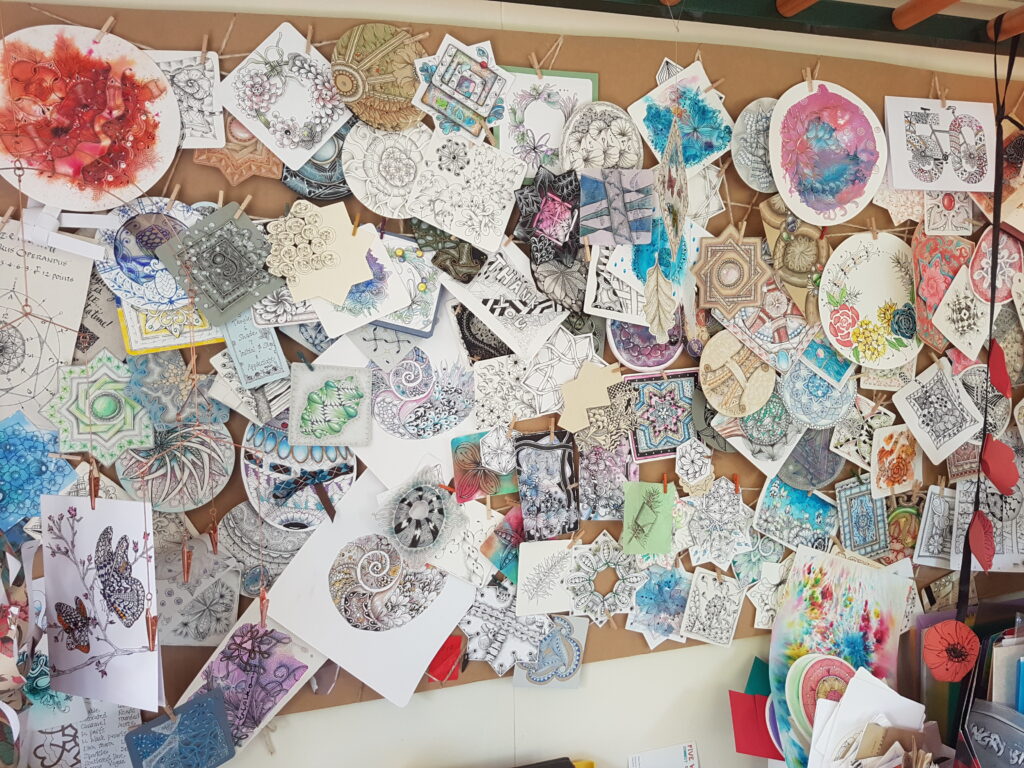
Recently both in an online forum and an email direct to me, I was asked about the copyright of patterns. So I thought just penning my thoughts here might be an idea.
A tangle is a pattern that has been deconstructed (by someone) and it is let out in the world for others to use as they wish. It is always nice if you can attribute a tangle to who deconstructed it if you promote it on social media – it’s just a kind thing to do, either with the name of the person, or the tangle name. Patterns have been out on this planet long before us humans got here, nature shows us some beautiful examples, through leaves, flowers, snowflakes, lichen, shadows, water reflections. Patterns are everywhere.
Where a pattern is turned into a logo, or a piece of art designed it can be copyrighted. If drawn by you and is totally your own work, you hold claim over the image.
If you do an original piece of art, it’s yours. You can do with it as you wish. (You can give credit if applicable to the tangles if you post on social media, but the drawing itself is yours. Compare it to drawing sunflowers, although when we think of a drawing of sunflowers, most people will instantly come up with one artist associated with ‘sunflowers’ but it doesn’t stop anyone else drawing them. So if you draw a ‘tangle’ design of your own composition, do with it as you like.
Where you can run into naughty territory is if you take someone else’s composition, and draw it in the same way, although ‘your drawing’ is yours, the ‘design’ of the drawing is someone else’s therefore you would need to credit it as such. For example if you saw a piece you liked and copied it, or if you did a lesson by someone, credit them, they are the ones that came up with the design idea.
If you are are then going to profit from this artwork, you’ll need to get permission, because you can’t honestly say it is ‘all your own’ from beginning to end, and although you can promote your drawing it should be with a credit to who helped you get there.
Say for example you have been asked to design a tattoo by a friend. If it’s your design and work – all good, you don’t need to credit it on someone’s arm, both they and you know that it had been a design commissioned between you both, and the tattoo artist will respect that, and also lay claim to the work they did on your friend’s arm.
But as another example if you followed a lesson online and you then choose to get it printed and sell the cards for money, you would need to ask permission from the person who did the composition, it may be your pen work, but they gave you the design. If you say did a secondary design, perhaps taking the techniques that you learnt from your lesson and put them into your own design, you are all good. If you feel like being kind and put a photo up on social media, it’s always nice to tag someone to show you appreciate what they inspired you to do.
Likewise if you teach a technique you can attribute to someone, good idea to mention their name. Some techniques have been around the art world for years, but some person has come along put a tangle spin on them. And if course more than one individual can come up with an idea at a similar time, and each will have their own spin on the technique. Often if you reach out to a fellow tangler they are delighted it is getting used.
